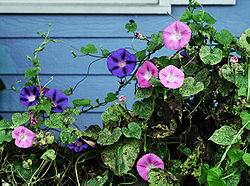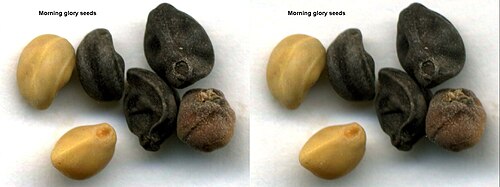
Hi Everybody!!
As many people in the world are enjoying hues of Autumn Colors, my trees are still green! The trees and shrubs are currently getting "haircuts" and shaped for next spring. I wait until this time of year to rework the beds. The snakes have begun hibernation and are very sleepy! Anyway, the green trimmings are collected and placed on the hot coals from the last bonfire. They burn rather rapidly and create a big smoke screen. I caught the smoke dancing in the sunlight for You. In Texas, we have one little tree that turns red. It is called a sumac. Below, I have shared links to your tree photostudies and info from Wikipedia on Sumac Trees and Morning Glories. The Heavenly Blues are adorning the tops of trees now to feed the Hummingbirds and butterflies in the last stage of the migrations. If You know me by now, then You know I Love My Trees!
I invite You to have a look-Enjoy!




Link to smokey tree album:
https://plus.google.com/photos/117645114459863049265/albums/5942580411476101345

My Tall Pine Trees
Morning Glory

https://en.wikipedia.org/wiki/Morning_glory
Morning glory
From Wikipedia, the free encyclopedia
Morning glory is the common name for over 1,000 species of flowering plants in the familyConvolvulaceae, whose current taxonomy and systematics are in flux. Morning glory species belong to many genera, some of which are:
- Calystegia
- Convolvulus
- Ipomoea
- Merremia
- Rivea
- Astripomoea
- Operculina
- Stictocardia
- Argyreia
- Lepistemon
Habit[edit]
Most morning glory flowers unravel into full bloom in the early morning. The flowers usually start to fade a few hours before the "petals" start showing visible curling. They prefer full solar exposure throughout the day, and mesic soils. Some morning glories, such as Ipomoea muricata, are night-blooming flowers.
In some places, such as Australian bushland, some species of morning glories develop thick roots and tend to grow in dense thickets. They can quickly spread by way of long, creeping stems. By crowding out, blanketing and smothering other plants, morning glory has turned into a serious invasive weed problem.
Cultivation[edit]
In cultivation, most are treated as perennial plants in frost-free areas and as annual plants in colder climates, but some species tolerate winter cold. There are some species which are strictly annual (e.g. I. nil), producing many seeds, and some perennial species (e.g. I. indica) which are propagated by cuttings. Some moonflowers, which flower at night, are also in the morning glory family.
Because of their fast growth, twining habit, attractive flowers, and tolerance for poor, dry soils, some morning glories are excellent vines for creating summer shade on building walls when trellised, thus keeping the building cooler and reducing heating and cooling costs.
Popular varieties in contemporary western cultivation include 'Sunspots', 'Heavenly Blue', the moonflower, the cypress vine, and thecardinal climber. The cypress vine is a hybrid, with the cardinal climber as one parent.
Many morning glories will self-seed in the garden. They have a hard seed coat which delays germination until late spring, at which time they will grow and flower rapidly. To improve the germination of purchased seeds, soak them in a dish of warm water overnight before planting.
History[edit]
Morning glory was first known in China for its medicinal uses, due to the laxativeproperties of its seeds.
It was introduced to the Japanese in the 9th century, and they were the first to cultivate it as an ornamental flower. During the Edo Period, it became very popular. The Japanese have led the world in developing varieties. Hundreds have evolved, such as a brownish coloured variant known as Dajuro, and varieties with such evocative names as 'Brocade of Dawn', 'Moon in the Dusk' and 'Wisteria Girl'. It has come to symbolize summer in Japanese horticulture and art.
Ancient Mesoamerican civilizations used the morning glory species Ipomoea alba to convert the latex from the Castilla elastica tree[citation needed] and also the guayuleplant to produce bouncing rubber balls.[citation needed] The sulfur in the morning glory's juice served to vulcanize the rubber, a process predating Charles Goodyear's discovery by at least 3,000 years.[1] Aztec priests in Mexico were also known to use the plant's hallucinogenic properties. (seeRivea corymbosa).
Culinary uses[edit]
| ||
| ||
| ||
| ||
| Morning glory seeds, mixed colors |
Ipomoea aquatica, known as water spinach, water morning glory, water convolvulus,ong-choy, kang-kung, or swamp cabbage, is popularly used as a green vegetable, especially in East and Southeast Asian cuisines. In the USA ipomoea aquatica is aFederal Noxious Weed, and can be illegal to grow, import, possess, or sell without permit. However, a market exists for the plant's powerful culinary potential. See:USDA weed factsheet. As of 2005, the state of Texas has acknowledged that water spinach is a highly prized vegetable in many cultures, and has allowed water spinach to be grown for personal consumption, in part because it is known to have been grown in Texas for more than 15 years and has not yet escaped cultivation.[2]Because it goes by so many names, it can easily be slipped through import inspections,[citation needed] and it is often available in Asian or specialty produce markets.




Link to Morning Glory Album:
https://plus.google.com/photos/117645114459863049265/albums/5942110944665648625
Sumac Tree


https://en.wikipedia.org/wiki/Sumac
Sumac
From Wikipedia, the free encyclopedia
Sumac (/ˈsjuːmæk/ or /ˈʃuːmæk/; also spelled sumach) is any one of approximately 250 species of flowering plants in the genus Rhus and related genera, in the familyAnacardiaceae. Sumacs grow in subtropical and temperate regions throughout the world, especially in Africa and North America.[3][4]
Sumacs are shrubs and small trees that can reach a height of 1–10 metres (3.3–33 ft). The leaves are spirally arranged; they are usually pinnately compound, though some species have trifoliate or simple leaves. The flowers are in dense panicles or spikes 5–30 centimetres (2.0–12 in) long, each flower very small, greenish, creamy white or red, with five petals. The fruits form dense clusters of reddish drupes called sumac bobs. The dried drupes of some species are ground to produce a tangy crimson spice.[5][6]
Sumacs propagate both by seed (spread by birds and other animals through theirdroppings), and by new shoots from rhizomes, forming large clonal colonies.
The word sumac traces its etymology from Old French sumac (13th century), from Mediaeval Latin su
| Sumac | |
|---|---|
 | |
| Sumac fruit in fall | |
| Scientific classification | |
| Kingdom: | Plantae |
| (unranked): | Angiosperms |
| (unranked): | Eudicots |
| (unranked): | Rosids |
| Order: | Sapindales |
| Family: | Anacardiaceae |
| Subfamily: | Anacardioideae |
| Genus: | Rhus (syn. Searsia) L.[1] |
Cultivation and uses[edit]
Species including the Fragrant Sumac (R. aromatica), the Littleleaf Sumac (R. microphylla), the Skunkbush Sumac (R. trilobata), the Smooth Sumac and the Staghorn Sumac are grown for ornament, either as the wild types or as cultivars.
Spice and beverage flavoring[edit]
The fruits (drupes) of the genus Rhus are ground into a reddish-purple powder used as a spice in Middle Eastern cuisine to add a lemony taste to salads or meat.[5] In Arab cuisine, it is used as a garnish on meze dishes such as hummus and is added to salads in the Levant. In Iranian (Persian and Kurdish) cuisine, sumac is added to rice or kebab. In Jordanian andTurkish cuisine, it is added to salad-servings of kebabs and lahmacun.Rhus coriaria is used in the spice mixture za'atar.[8][9]
In North America, the Smooth Sumac (R. glabra) and the Staghorn Sumac (R. typhina) are sometimes used to make a beverage termed "sumac-ade," "Indian lemonade" or "rhus juice". This drink is made by soaking the drupes in cool water, rubbing them to extract the essence, straining the liquid through a cotton cloth and sweetening it. Native Americans also used the leaves and drupes of the Smooth and Staghorn Sumacs combined withtobacco in traditional smoking mixtures.
Candlewax[edit]
In East Asia, in particular in Japan, traditional candle fuel was produced from Rhus verniciflua and Rhus succedanea (synonym ofToxicodendron succedaneum), among other sumac plants, rather than beeswax or animal fats. The sumac wax was a byproduct of traditional Japanese lacquer manufacture. The conical rousoku candles produced from sumac wax burn with smokeless flame and were favored in many respects over candles made from lard or beeswax during the Tokugawa shogunate. The Japan wax itself is not a true wax but a solid fat that contains 10-15% palmitin, stearin, and olein with about 1% japanic acid (1,21-heneicosanedioic acid). It is still used in many tropical and subtropical countries in the production of wax match sticks.
Dye and tanning agent[edit]
The leaves of certain sumacs yield tannin (mostly pyrogallol-type), a substance used in vegetable tanning. Notable sources include the leaves of R. coriaria, Chinese gall on R. chinensis, and wood and roots of R. pentaphylla. Leather tanned with sumac is flexible, light in weight, and light in color. One type of leather made with sumac tannins is morocco leather.[10]
Medicinal use[edit]
Sumac was used as a treatment for half a dozen different ailments in medieval medicine, primarily in Middle-Eastern countries (where sumac was more readily available than in Europe). An 11th-century shipwreck off the coast of Rhodes, excavated by archeologists in the 1970s, contained commercial quantities of sumac drupes. These could have been intended for use as medicine, or as a culinary spice, or as a dye.[11] Staghorn sumac is a powerful antioxidant, with ORAC rating over 1500 μmol TE/g.[12]
Other uses[edit]
Some beekeepers use dried sumac bobs as a source of fuel for their smokers.[13]
Sumac stems also have a soft pith in the center that is useful in traditional native American pipemaking. They were commonly used as pipe stems in the northern United States.[14]
Dried sumac wood fluoresces under long-wave ultraviolet radiation, commonly known as black light.[15]
Toxicity and control[edit]
Some species, such as Poison ivy (Rhus toxicodendron, syn.Toxicodendron radicans), Poison oak (Rhus diversiloba, syn.Toxicodendron diversilobum) and Poison sumac (Rhus vernix, syn. Toxicodendron vernix), have the allergen urushiol and can cause severe allergic reactions. Poison sumac may be identified by its white drupes.
Mowing of sumac is not a good control measure, since the wood is springy, resulting in jagged, sharp pointed stumps when mowed. The plant will quickly recover with new growth after mowing.[16] Goats have long been considered an efficient and quick removal method as they eat the bark, which helps prevent new shoots.


Link to Sumac Album:
https://plus.google.com/photos/117645114459863049265/albums/5942577800593445473

...this is brendasue signing off from Rainbow Creek. See You next time!

O+O






No comments:
Post a Comment
Hi Everybody! Please say hello and follow so I know you are here! Due to the inconsideration of people trying to put commercials on my blog comment area, I have restricted use of anonymous posts. Sorry that some hurt all.
My public email is katescabin@gmail.com No spammers or trolls